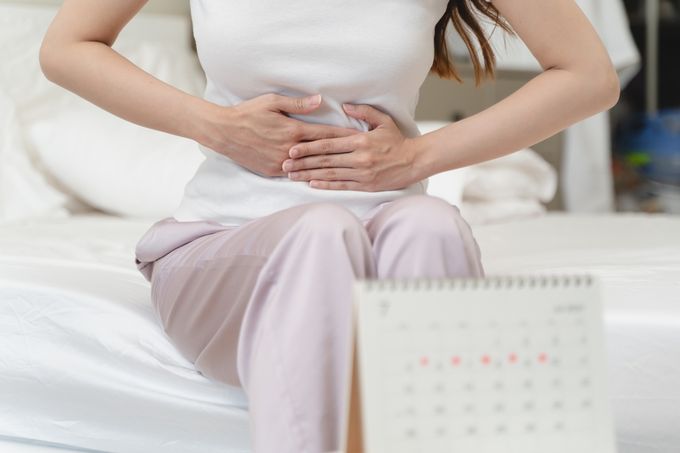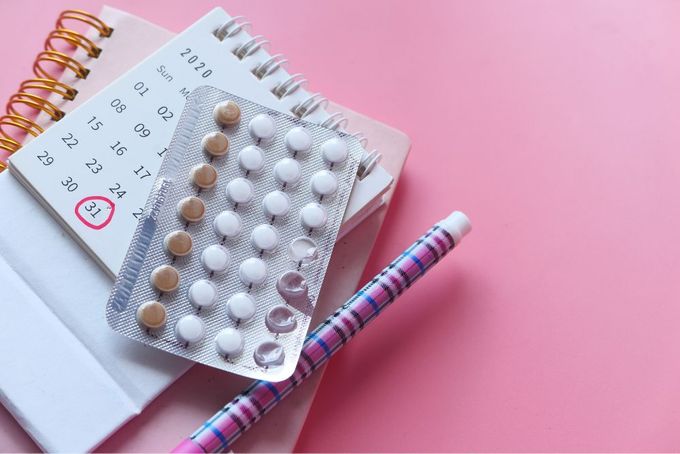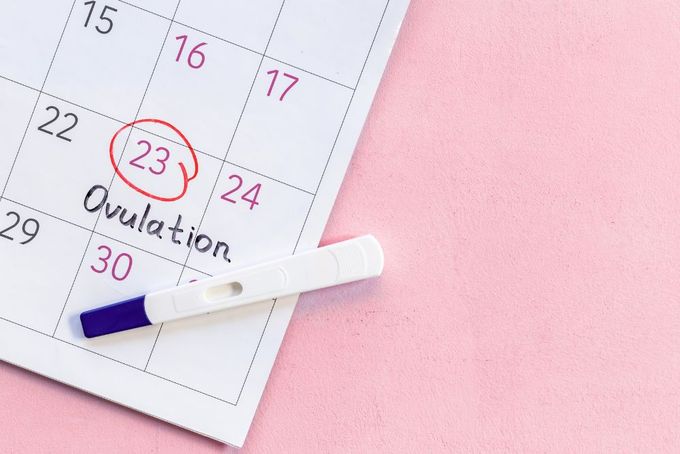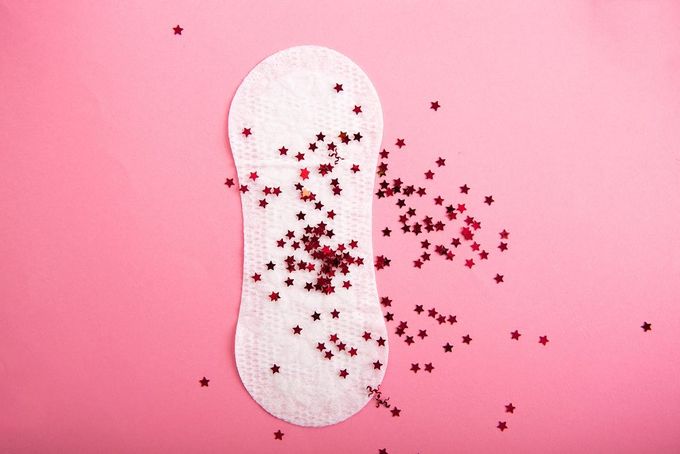4 Causes of Spotting Mid-Cycle (Ovulation, Between Periods, etc.)
Updated August 19, 2025
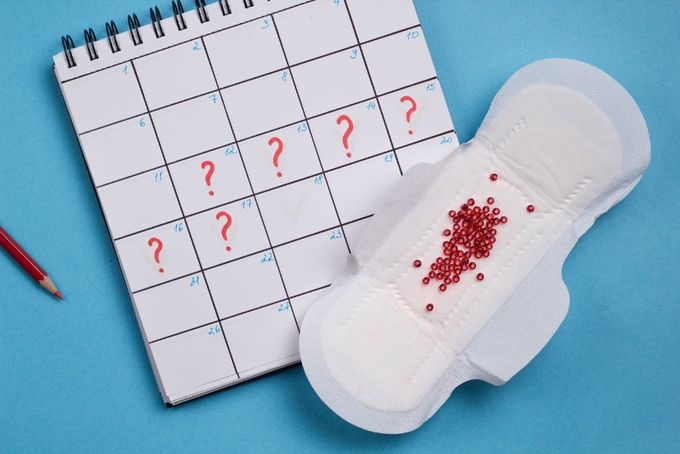
Spotting between periods is a common concern for women in their reproductive years. Below we'll share some common causes of mid-cycle spotting, however, some of the causes can be serious and require treatment. Always check with your medical provider to ensure you get a proper medical workup.
While there may be some variation in menstrual cycles, it is ideal for cycles to follow predictable patterns where we see regular periods followed by shifts in cervical fluid and BBT that indicate regular ovulation. However, about 5% of ovulating women experience bleeding in between periods, also known as mid-cycle spotting.
Intermenstrual bleeding is the medical term for bleeding or spotting mid-cycle, which simply refers to bleeding between regular periods (menses). Intermenstrual bleeding can occur early in the cycle, mid-cycle, and late in the cycle, and follow a predictable and cyclical pattern or have no pattern at all.
4 Common Causes of Mid-Cycle Spotting
1. Ovulation Spotting
2. PCOS
3. Sexual Intercourse
4. Implantation Bleeding
What Causes Mid-Cycle Spotting?
Some women experience bleeding or spotting mid-cycle, which can be caused by a variety of reasons, including:
- Ovulation or lack thereof
- Abnormalities of the cervix or uterus
- Overgrowth of tissues
- Cancer
- Bleeding disorders
- Hormonal or metabolic conditions
- Pregnancy or pregnancy-related concerns
- Medications (especially hormonal birth control)
How to Identify Spotting Between Periods?
Tracking your cycle with fertility awareness and confirming your ovulation with markers like cervical fluid and basal body temperature is the best way to know when, or if, you are ovulating. This way, you will have the most accurate data to know where you are in your cycle and if you should be bleeding, helping you determine if you are having mid-cycle spotting or spotting at another time in your cycle.
This is valuable data in your journey and incredibly helpful information to have when or if you need to see a medical provider for a workup, because this helps guide their decisions around what may need to be tested.
4 Causes of Mid-Cycle Spotting
1. Ovulation Spotting
During ovulation, your body goes through complex hormonal changes and spotting is thought to be related to the mid-cycle drop in estrogen that occurs around ovulation. Some women may experience spotting near ovulation. This discharge can be:
- Brown discharge mid-cycle
- Bleeding mid-cycle that is bright red
- Light pink bleeding in the middle of the luteal phase*
*In a 28-day cycle, with ovulation on day 14, you may notice light pink bleeding on or around day 20 of the cycle.
Again, a great way to see if bleeding during ovulation is related to ovulation itself would be to track your cycles. Even though this can be normal and nothing to worry about, it's always best to speak with your medical provider about it and ensure you are up to date on routine testing to rule out more serious causes of spotting.
Track Your Cycle Accurately
Track your cycle with Tempdrop’s wearable sensor that continuously monitors your BBT while you sleep, and sync the data to the app whenever it's convenient, without having to wake up at the same time each day.
Why Tempdrop?
- Accurately identifies fertility window
- Provides continuous monitoring
- Accurately tracks personal BBT patterns
- It's safe, non-invasive, and has zero radiation
- Easy-to-use wearable sensor and a charting app
2. PCOS
With PCOS, we often see long or irregular cycles with extended follicular phases, spotting during the follicular phase, and/or periods of anovulation (or lack of ovulation). If you're tracking your cycles, you'll be able to see if you're ovulating or not.
In a typical cycle, estrogen is the hormone dominant in the first part of our cycle (our follicular phase), which builds the endometrial/uterine lining.
Progesterone is the hormone dominant in the second part of our cycle, which stabilizes the endometrial lining. When we have long or extended cycles with ongoing or excess exposure to estrogen, this can make us more likely to have random spotting, especially if we are not ovulating and making progesterone available to stabilize the lining of the uterus.
If you are noticing irregular cycles or suspect you have PCOS working with a holistic or integrative provider can be a great way to get your symptoms and cycles in a healthier balance and prevent long-term, more serious risks.
» Check out these 5 tips for tracking your cycle when you have PCOS
3. Sexual Intercourse
Occasionally, sexual intercourse can cause irritation to the tissue in the vagina or can stimulate bleeding from tissue growths we may have on the cervix or inside the uterus. Bleeding with sex can also be a sign of an irritated cervix, vaginal imbalance, or a sexually transmitted infection.
If you are experiencing bleeding during or after sex during ovulation, or at other times in your cycle, always schedule a medical visit to make sure you rule out more serious causes and receive any necessary treatment.
4. Implantation Bleeding
Some women will experience some spotting when a fertilized egg implants or burrows into the uterine wall. This typically occurs 6-10 days after ovulation because the fertilized egg has to have time to travel the length of the uterus and into the uterus.
If you track your cycle, you will see this in the mid to late luteal phase. Keep in mind, this bleeding can happen in both pregnancy and non-pregnancy cycles.
If you're concerned that you are pregnant or concerned about a potential miscarriage, please seek medical care.
Whether you want to increase your chances of conceiving or want to practice the fertility awareness method, Tempdrop offers the most convenient full fertility tracking solution.
Closing the Gap on Mid-Cycle Spotting
While mid-cycle spotting can be a cyclical, regular, and even normal experience for some people, the safest thing to do is to track your patterns. Be sure to check with your medical provider and get appropriate testing to rule out more serious causes of mid-cycle bleeding that may require treatment or intervention.
